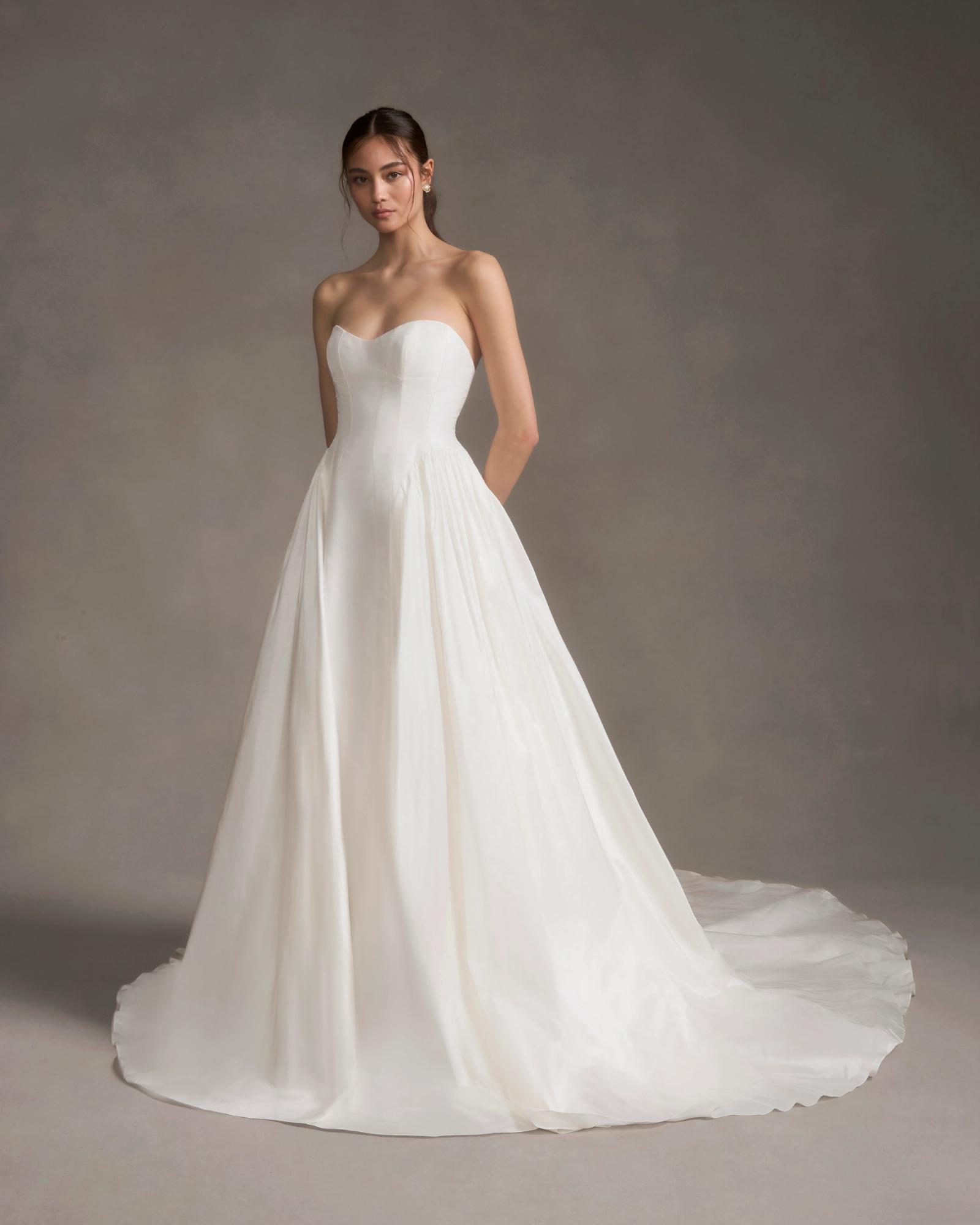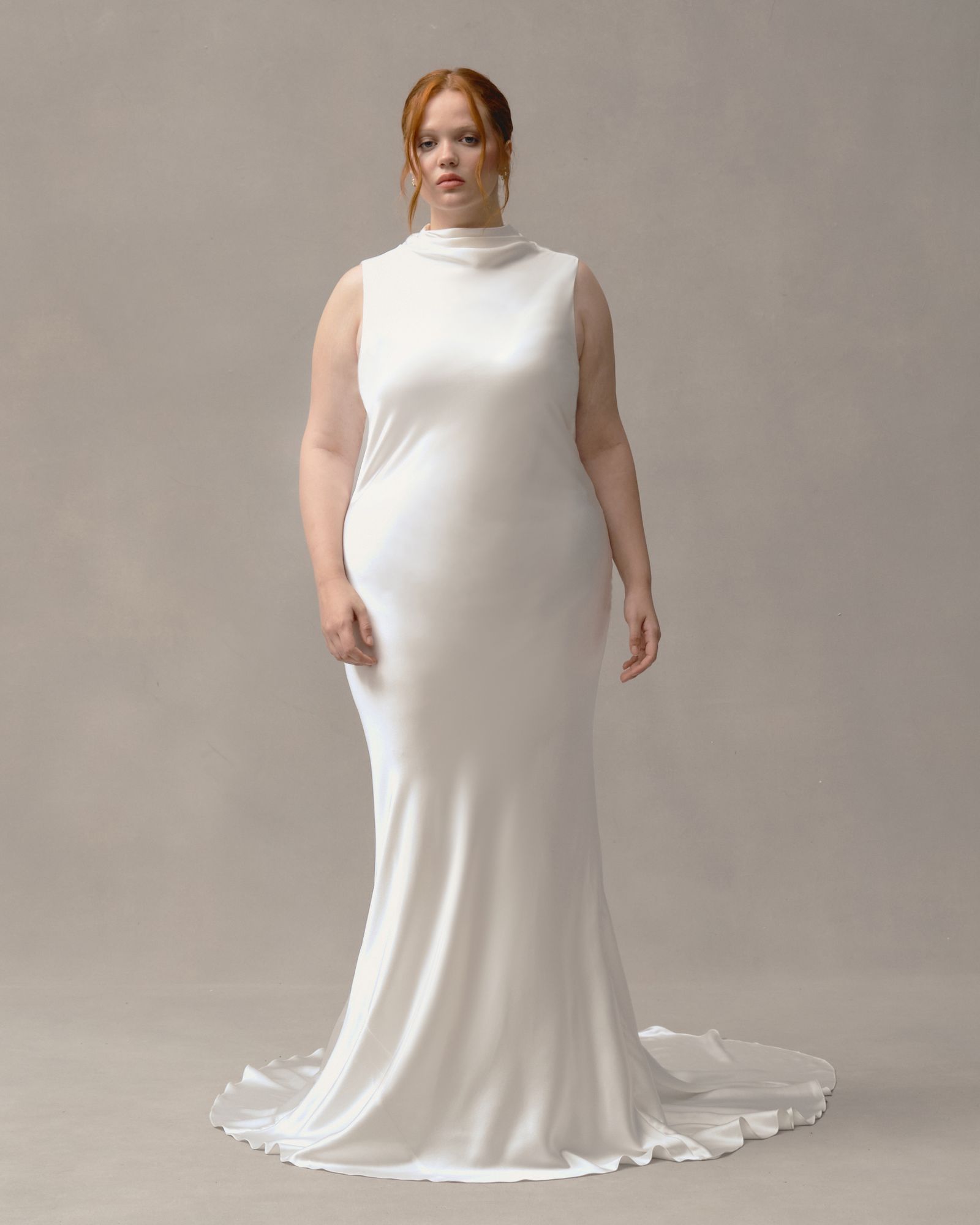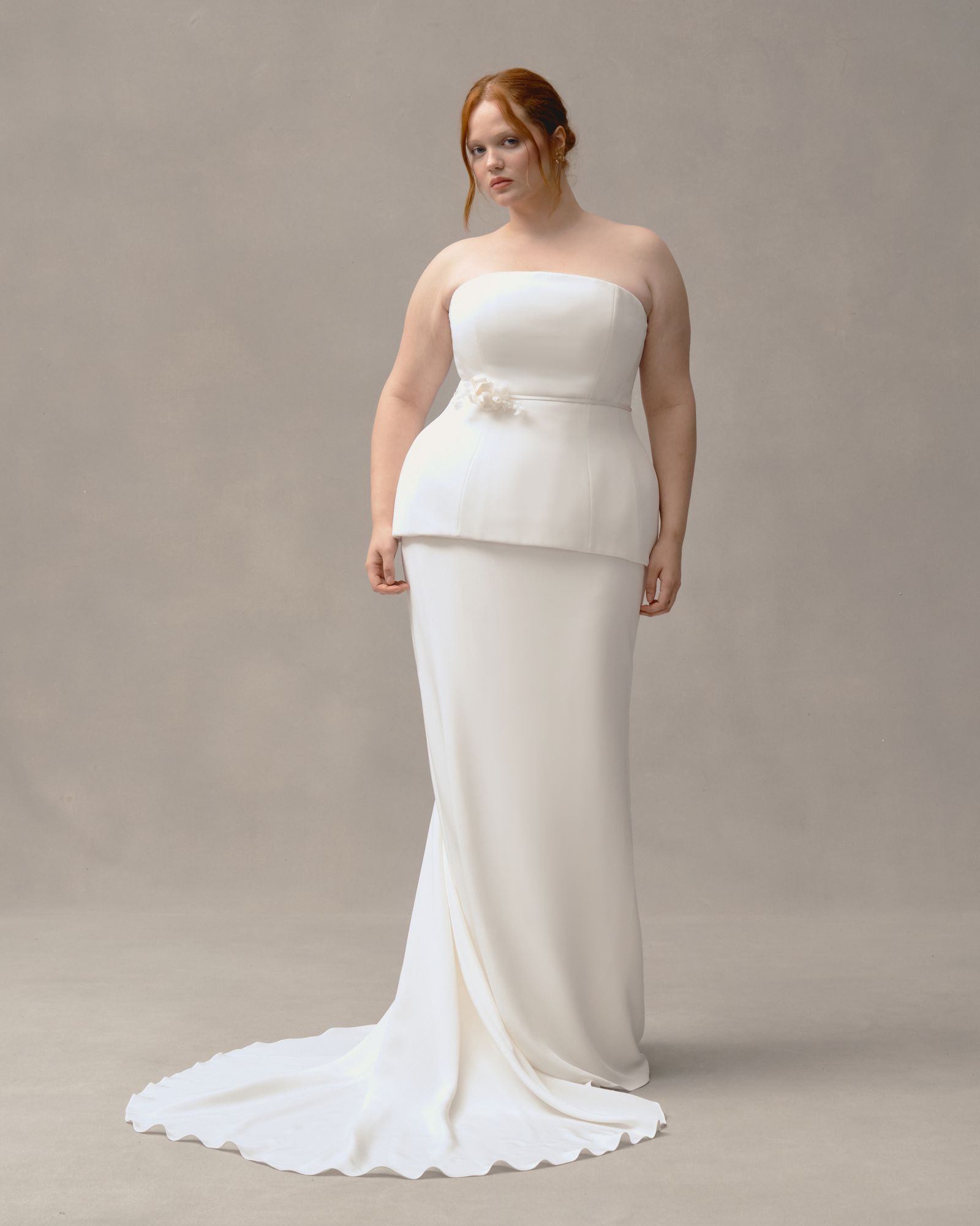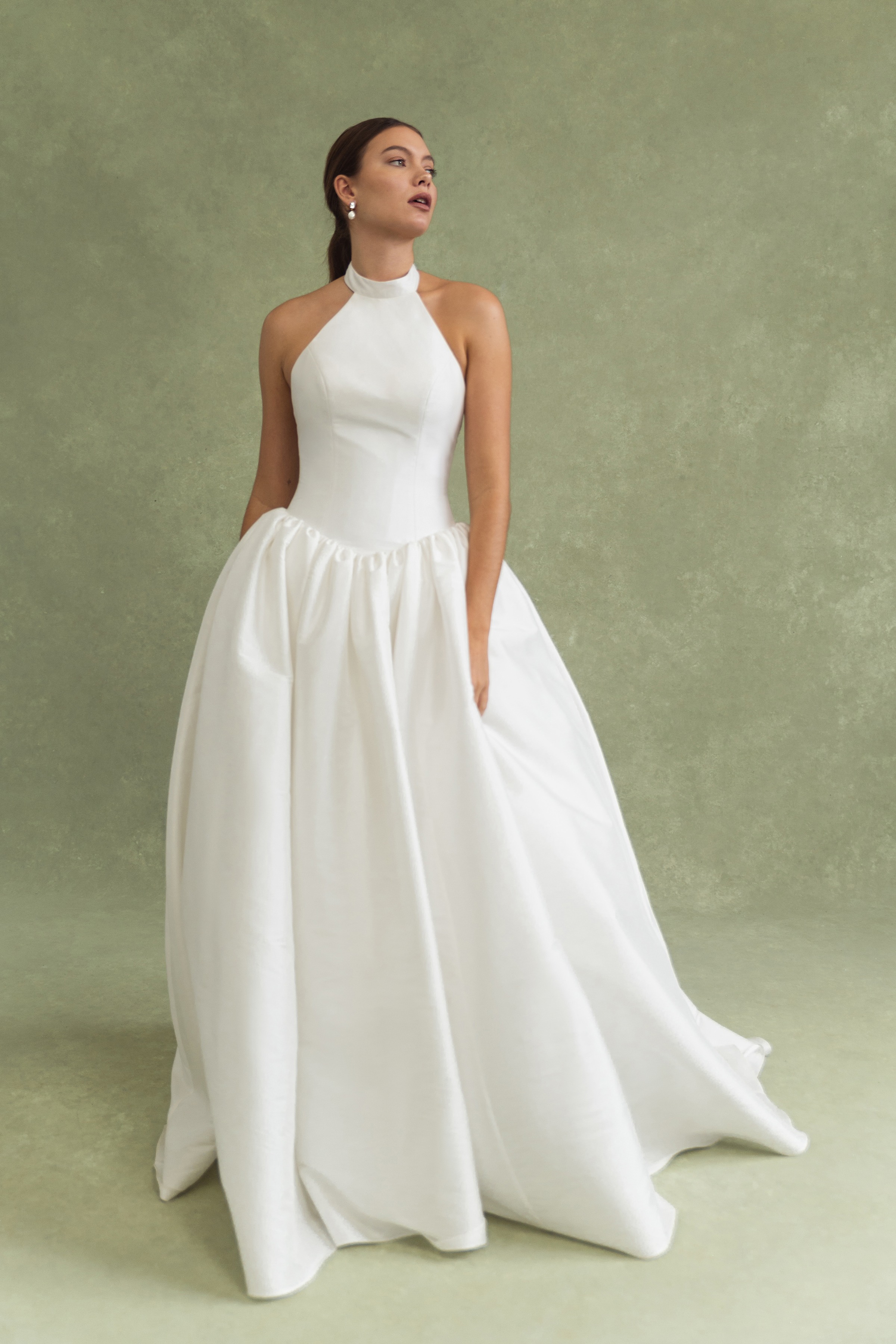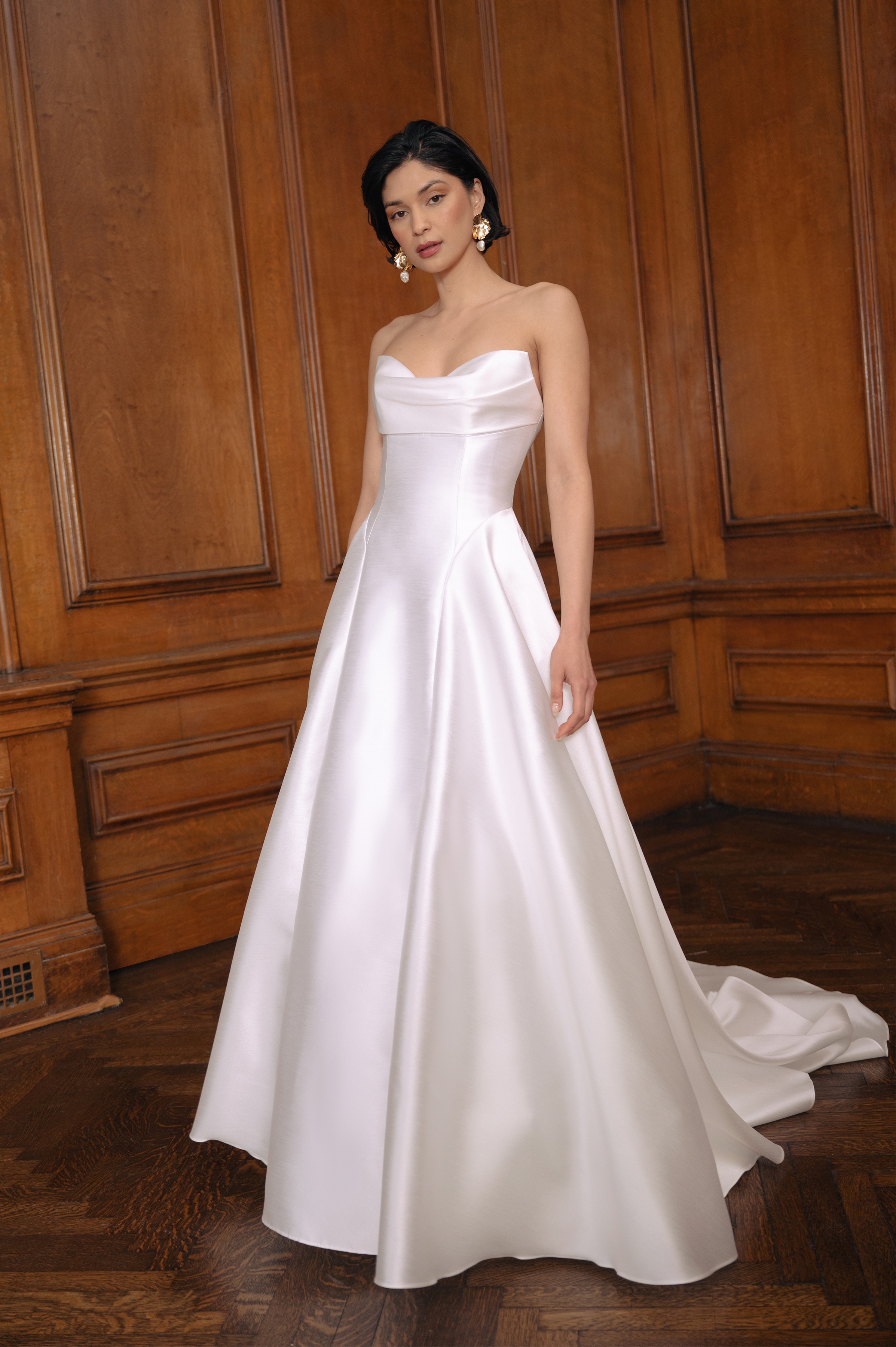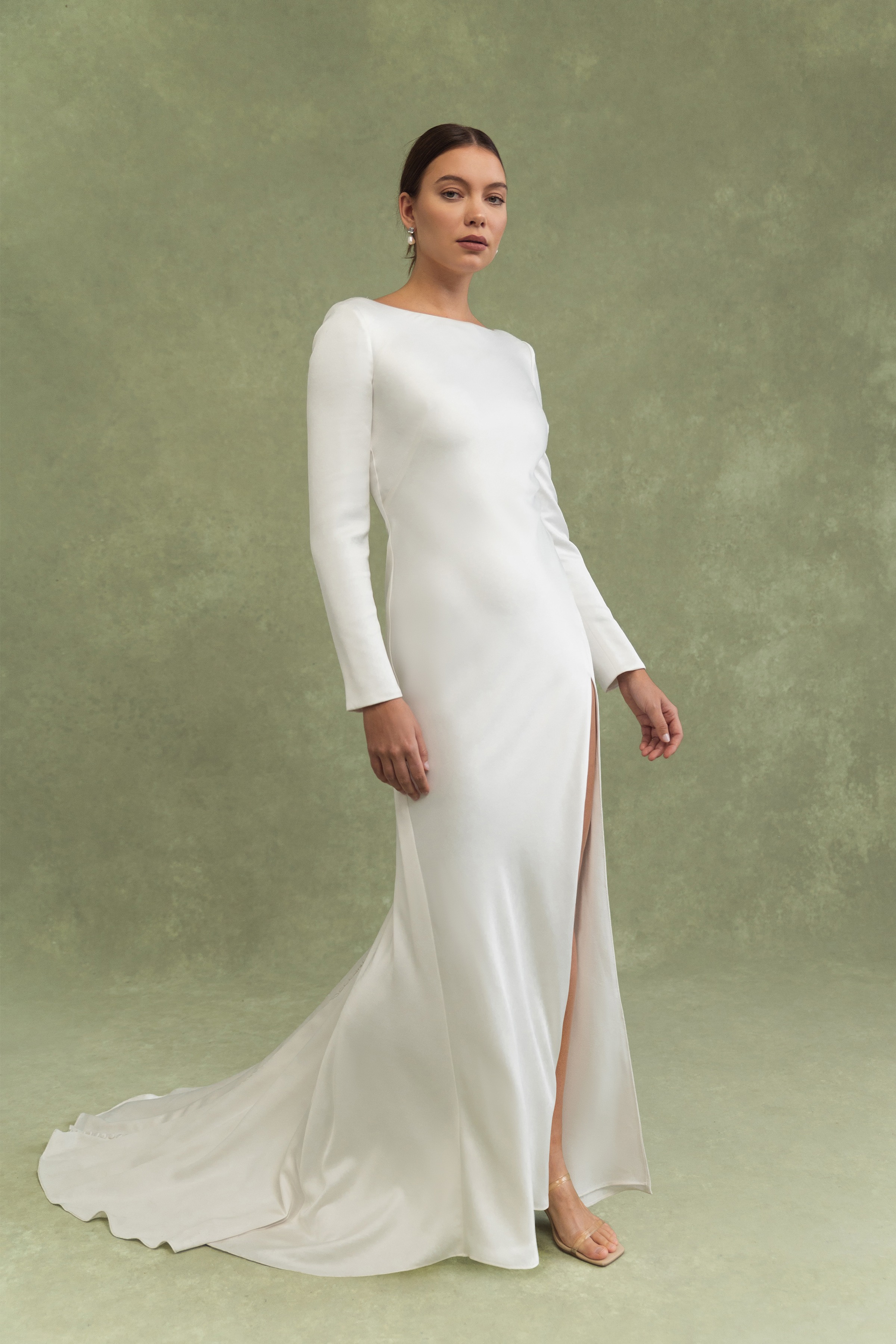Designers Are Finally Beginning to Understand the Plus-Size Bride—Why Did It Take So Long?
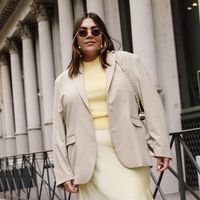
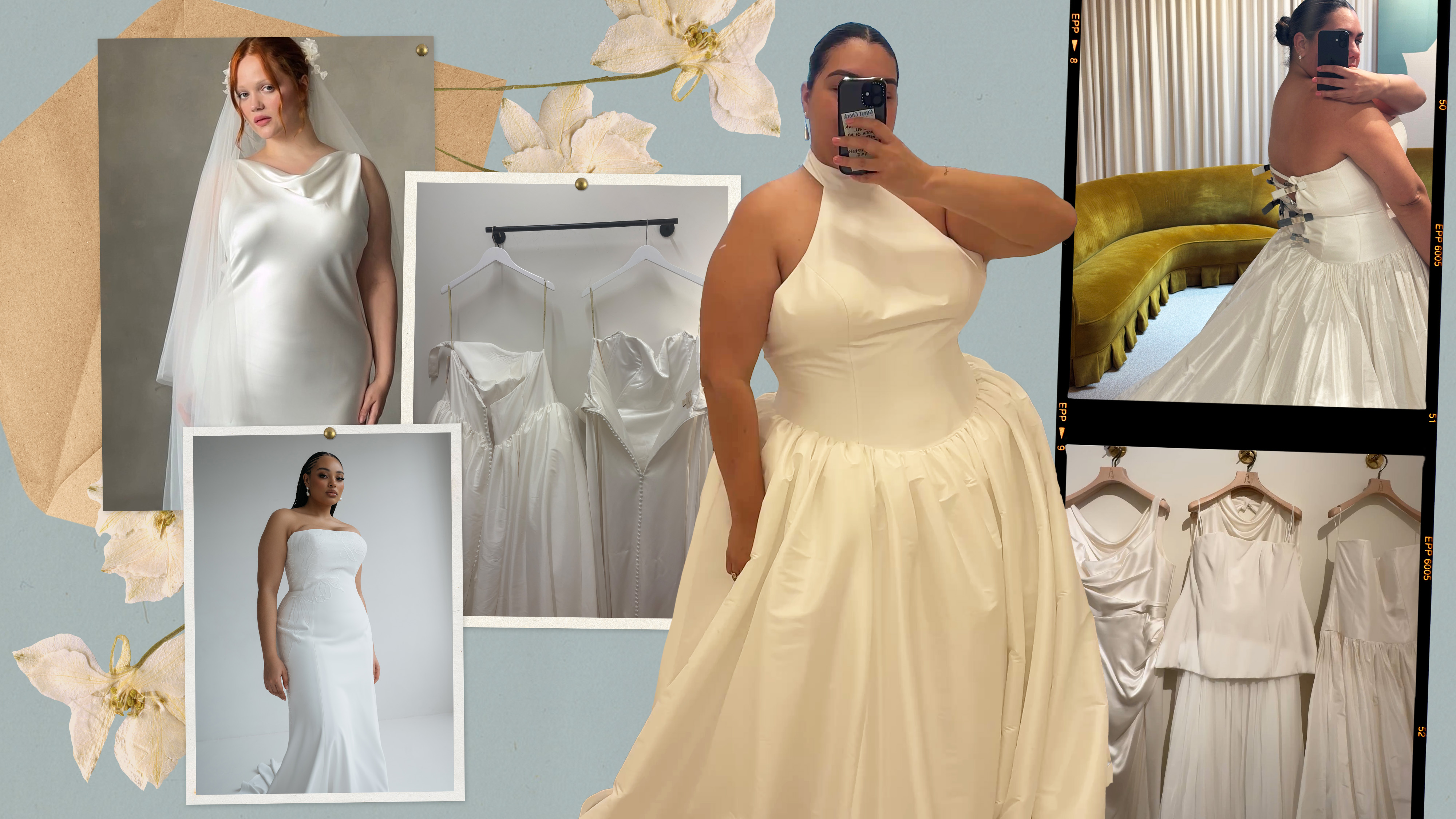
There's a very specific kind of loneliness that comes with being a plus-size bride before you've even tried on a single dress. The wedding industry—so wrapped up in fantasy—has a way of making you feel like you don't belong in the dream. From the outside, the options seem clear. Settle for a mass-market gown made from stiff synthetics and drowning in rhinestones, or spend thousands on a custom design you can't try on from a brand that may never show a model who looks like you. Neither option feels aspirational. Neither feels fair.
Even before the actual search began, I had lowered my expectations to zero. I'd watched enough TikTok videos of brides standing half-clipped into a single size 10 sample and heard enough stories of stylists offering backhanded compliments disguised as encouragement. I knew the drill. But beneath that pragmatic armor lived a quieter fear: that the style I had always loved—refined, restrained, intentionally minimalist—wasn't available to me. I could either be plus-size or chic but not both. I didn't want to be brave. I didn't want to be "flattered." I wanted to feel seen. I wanted to feel like I belonged in the room, not like I had to earn my way into it. In an industry where size inclusion often feels like a checkbox or an afterthought, even that felt like too much to hope for.
Wedding-dress shopping is marketed as a joyful rite of passage—a montage moment filled with champagne, tears, and instant transformation. But for many plus-size brides in the United States, it's something else entirely. It's a reminder of how the wedding industry still overlooks them even if they have the taste and budget for something greater. While there's been some progress in the past decade, access to stylish, size-inclusive gowns in the contemporary and demi-couture market remains frustratingly limited. From pattern making to runway representation, we're still far from equity. I'm not the only bride feeling this way. The feelings I carried into dress shopping have been echoed by countless brides—and the professionals who advocate for them every day—for decades.
"My frustration with bridal, originally, was coming from a place of lack of samples. It's like, What do you mean you don't have anything for midsize, curvy brides? That's the majority of America," explains Alysia Cole, a plus-size bridal stylist and content creator. Most bridal showrooms and designers carry two sizes: a size 4 and a size 10 meant to fit as many sizes above, below, and between that range as possible. Given that bridalwear is cut two to four sizes smaller than normal (a practice started by couture ateliers decades ago), you're typically out of luck if you're above a size 14.
We have to acknowledge that not every small, independent designer is able to manufacture a plus-size sample in every single style they offer due to increased production and labor costs, but it's a cut that still stings when plus-size brides are searching for a dress. Walking into a bridal studio and not even having options to try on from the start sets up plus-size brides for failure, Cole notes. Cole, a 10-year industry veteran whose work centers plus-size, queer, and gender nonconforming fiancés, started her business out of sheer desperation. When she got engaged in 2015, she felt like the industry wasn't built for her. At times, she still feels like it isn't, despite years of performative leaps and bounds forward for size inclusivity in the ready-to-wear space.
Cole can't shake the feeling that the wedding industry carries around a fat tax that operates much like the pink tax, which explains the higher cost for goods and services marketed toward women.
At the request of clients, Cole will reach out to brands to see if they can accommodate hopeful brides for a one-off dress made in expanded sizing. It's about a 50-50 split between designers who will take on the client and ones who can't. For the ateliers that can accommodate, it's rare to find one that won't charge extra for the new size—citing reasons like more labor, a new pattern, or extra fabric for the increased price. For a handful of well-known designers who offer this service, it might make your dress a whopping 50% more expensive. And that's if they advertise that service and an expanded size chart on their website. For many household-name bridal designers, this option feels secretly concealed, and in my opinion, it feels like they carry a bit of shame around the lack of inclusivity on their end.
Nothing grinds Cole's gears more than the fabric argument, though. "I hate it with my whole spirit," she admits. "My argument is always, 'Okay, then why aren't you charging more for a size 6 over a size 0?' They won't do that. They've made an arbitrary line, and that's very frustrating."
The bridal fat tax shows up at every stage of the wedding-dress search. Even if you manage to find a dress you love, many designers aren't equipped to properly cut patterns for true plus-size bodies. This often results in dresses with awkward proportions, which then require expensive alterations—costs that could have been avoided if the dress had been designed with a plus-size person in mind from the start.
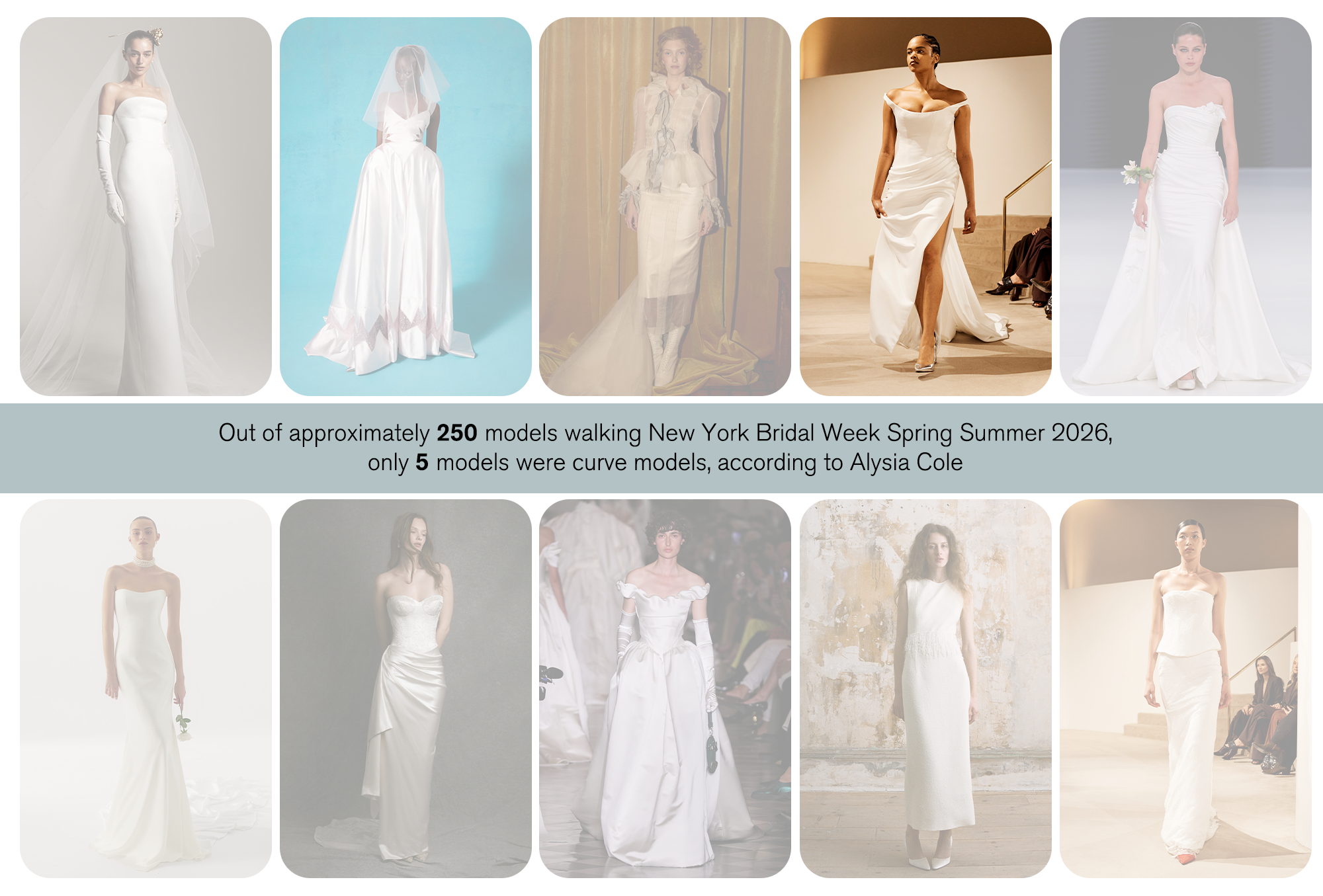
New York Bridal Fashion Week came and went in April, and according to runway imagery, media press kits, and first-hand accounts, it was one of the worst by far for size inclusivity advocates. Based on her calculations, out of 250 models, about five were curve models (only two of which Cole says were above a size 8/10). The result was a highly viral video calling out the lack of diversity on the runways and in campaigns. Cole admits she got several angry DMs and comments where brands pointed back and forth at each other, everyone refusing to take responsibility for the part they play in perpetuating a fatphobic narrative in the wedding industry.
"If designers say, 'It's not our fault no one wants to buy this,' I'd say, 'Take a risk.' I've also heard, 'It's not our fault—we can't find plus-size models,' which doesn't make any sense to me," Cole explains. "I think all of us just need to get a little creative, but … you have to genuinely care about it. Size inclusivity can't just be something you feel like you have to do. It has to be something you actually want to do. Otherwise, it's just too easy to push under the rug and be the first thing that brands cut."
Who What Wear Weddings Tip: Don't look at the numbers, I promise. By most accounts, bridal sizing is akin to traditional couture sizing, where garments are cut anywhere from 2 to 4 sizes smaller than typical street sizing. Bridal salons will often choose not to tell you what size you're wearing, focusing on the cut, shape, and tailoring of a gown by adjusting it to your size using elastic, modesty panels, and dozens of clips.
For the majority of brides, searching for the dress feels like an all-consuming, overwhelming task with hurdles at every turn. You're wiggling in and out of samples that don't fit the majority of the time, standing in front of a mirror to dissect every flaw, and then opening up the floor to harrowing criticism disguised as gentle reminders from the people who love you. Your arms look big. The bodice is a bit too busty. Are you really going to wear a dress that does nothing to flatter you?
My late-night spiral was kicked off mere days after getting engaged. I thought back to one of the first conversations my mother had with me when I subtly soft-launched the conversation a few months before my fiancé got down on one knee. Back when she got engaged, she went to a doctor to lose weight before her wedding and lost nearly 50 pounds—a gold star of beauty standards back in Venezuela in the '80s. That memory lingered in my mind as I began navigating my own journey toward the big day, a loosely held reminder of what I could and, in many people's eyes, should do.
The concept of "flattering" in the wedding-dress space—let alone the plus-size wedding-dress space—raised a few hairs on the back of my neck when I anxiously filtered through forums and TikTok series of stylish brides documenting their wedding-dress search. It's not a crime to want to look your best on your wedding day, but when the wedding industry subtly pushes the idea that being smaller automatically makes you more beautiful, elegant, and timeless, what then?
As someone who's lived their entire life outside of the straight-sizing range, I spent far too much time imagining the body I grew up to love and appreciate being squeezed, poked, and prodded into fitting a four-sizes-too-small sample simply because it was the only option. Did the wedding industry want me to feel invisible on the happiest day of my life because I wasn't a size 4? I set out on a three-week process to investigate.
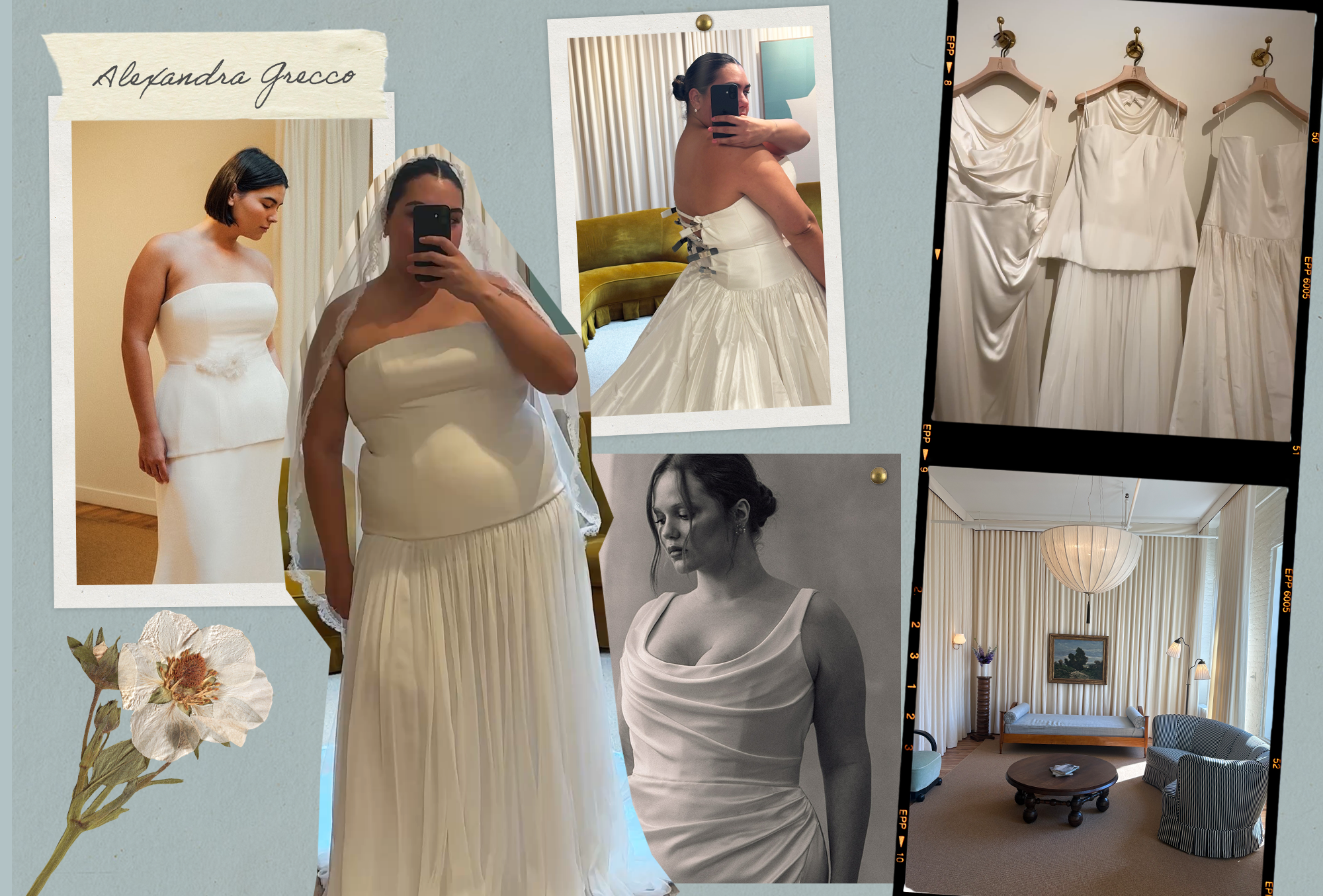
Alexandra Grecco began her namesake label nearly 15 years ago, beginning with a ready-to-wear label and eventually stepping into bridalwear after several clients begged her to create custom wedding gowns and pieces in light, airy ivory fabrics. "There was a gap in the market for gowns that felt less traditional and a bit more modern. It just made sense to launch the brand. … Everything that was important to me aligned," Grecco explains, cocooned in her intimate SoHo loft atelier. "Finding a dress is a big moment for people, and being a part of that process is something I don't take lightly at all. Everything I do goes into honoring that moment."
Grecco's wedding-industry career began on the road. She traveled across the country with a suitcase full of gowns for trunk shows, meeting brides where they were. At one of those early events, she recalls a moment that has stayed with her: A bride-to-be couldn't try on a single dress at the store where Grecco was showcasing and was effectively excluded from the experience altogether. "Everyone deserves to have that moment, and my goal is to have everyone visualize what their dream piece looks like on them," she says. It's a mission informed by the reality that sampling—trying on a gown in your actual size—is still one of the most frustrating barriers plus-size brides face.
At Grecco's showroom, sample sizes go up to a size 24, and the brand offers split-sizing at no additional cost. It's a cornerstone of the New York based label's ethos, which centers craftsmanship, fast turnaround times, and radical inclusivity. "It's a little bit of extra fabric, but I would much rather make less profit than make someone feel different or like they need to pay some sort of fee for being the size that they are," she explains.
Who What Wear Weddings Tip: If you're searching for a dress, go sooner rather than later. Most brands operate on a nine- to 12-month timeline, with some even optioning to have brides start buying their gowns 15 months in advance given the uncertainty of shipping delays and additional tariffs due to escalating trade tensions that can affect overseas manufacturers.
To extend that accessibility beyond their own showroom, Grecco's team works closely with retail partners, incentivizing them to carry larger sizes. By offering plus-size samples at a significantly reduced wholesale cost, the brand helps lower the barrier for stockists—making it easier for showrooms to invest in size inclusivity and, ultimately, for more brides to feel seen.
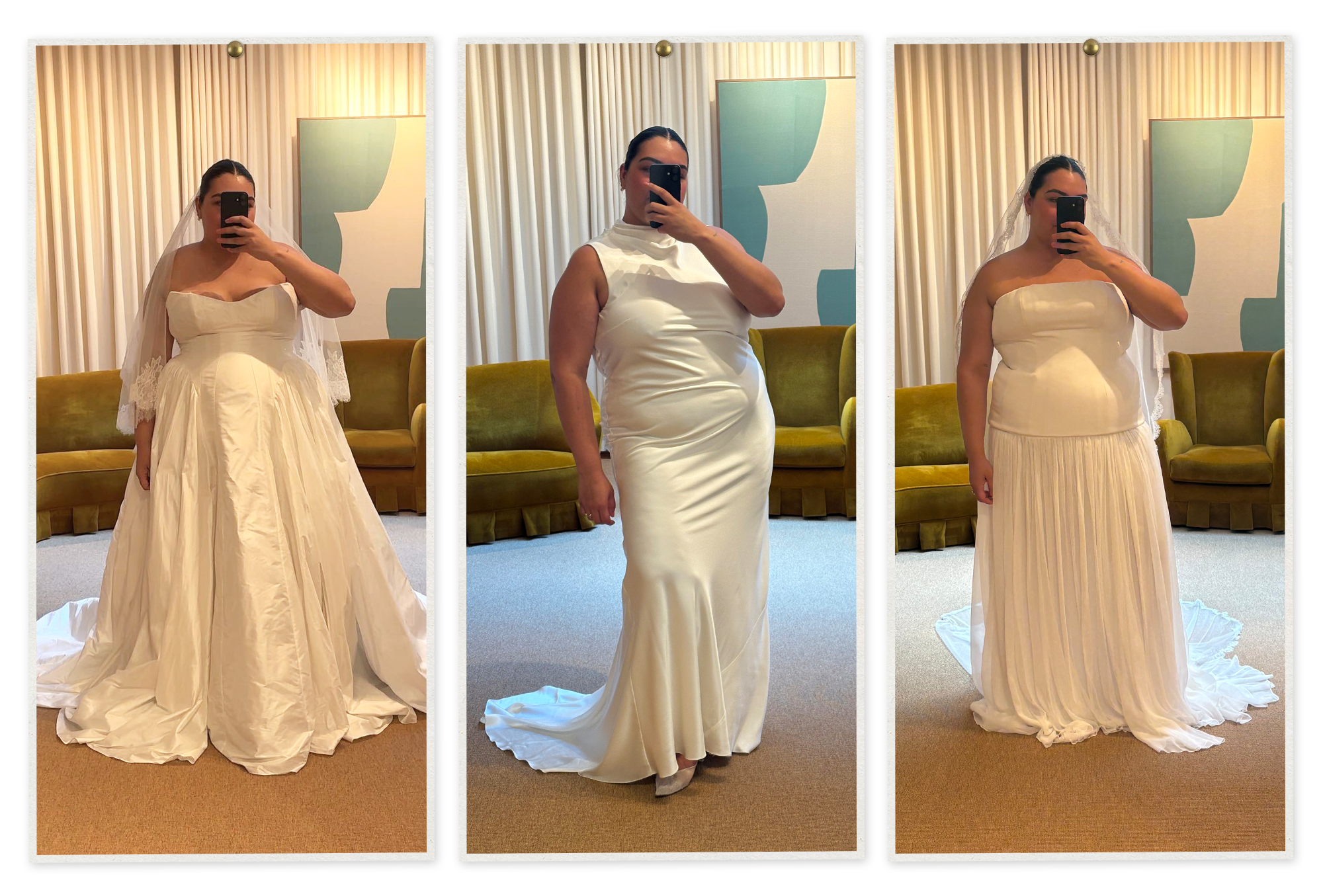
Grecco doesn't stop there. The brand often designs with a size 8 or 10 in mind rather than a size 0 or 2 like many bridal designers. The result is a pattern-scaling process that allows a gown to look and fit exactly the same on a straight-size bride as it would on a plus-size bride. "Does it take more time to develop additional sizes and multiple samples in stores? Of course it does, but is it a priority that those pieces exist so that our clients can come in and have this beautiful experience? One-hundred percent," she says.
Far beyond sizing, though, Grecco's garments live in a dreamscape. They're whimsical, airy, and reminiscent of a romantic, thought-provoking bride. They're gowns that feel like poetry in motion rather than costume or constraint. The brand's aesthetic leans modern yet timeless with ethereal silhouettes, hand-applied details, and a softness that evokes feeling before formality.
Before beginning my wedding-dress search, I was gripped by a quiet fear that the pieces I've always gravitated toward weren't made with bodies like mine in mind, but when I stepped into Grecco's showroom for my very first appointment, something shifted. I was met not only with racks of beautiful gowns in my size but also with a sense of creative belonging. I knew I was always going to feel beautiful on the inside throughout this process. But seeing that beauty mirrored on the outside in a garment that honored both my style and my shape was a humbling, almost surreal experience. For any bride who's been told—explicitly or implicitly—that she's too big to belong, moments like these stay with you.
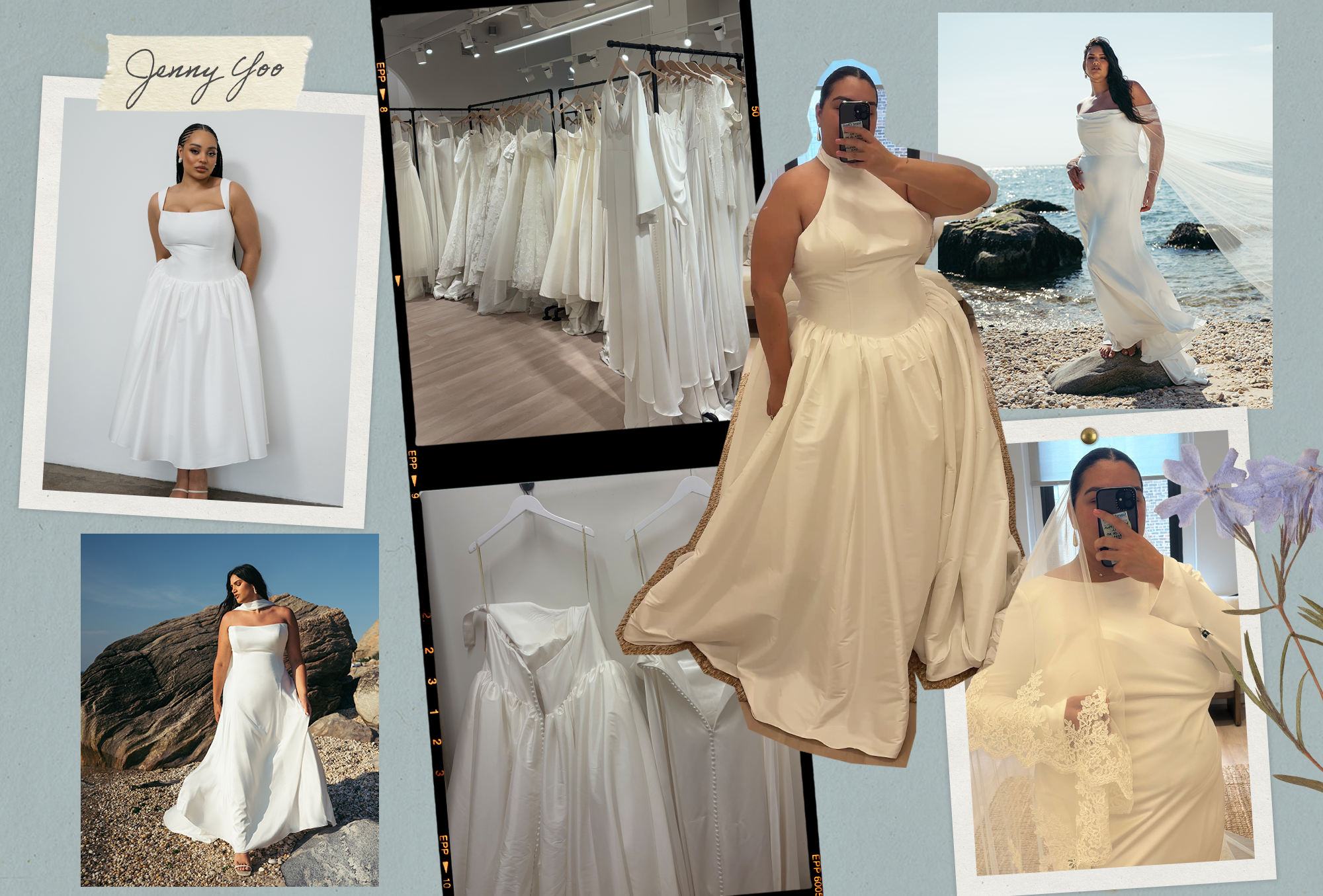
Any bride who's planned a wedding in the past few years has likely come across a Jenny Yoo gown, saving a few to a Pinterest board and screenshotting them during a late-night scroll. The New York based label has quietly but powerfully evolved into a modern bridal mainstay, starting as a go-to for chic, understated bridesmaid dresses and growing into a full-scale wedding wardrobe brand. Today, it offers everything from demi-couture ceremony gowns to sleek after-party looks and honeymoon-ready minis, all with a signature sense of effortless sophistication. Jenny Yoo isn't just offering a few plus-size options tucked in the back—it's putting plus-size brides at the center of the narrative and making sure they see themselves reflected in one of the most celebrated bridal brands in the game.
Beyond its design versatility and trend-forward appeal, what sets Jenny Yoo apart is its commitment to accessibility, both in price point and sizing. As one of the largest bridal lines in the U.S., the brand makes gowns that speak to nearly every kind of modern bride and does so with one of the most inclusive size ranges in the industry, going up to a size 32. In a country where the average woman is a size 16, that choice feels less like a marketing tactic and more like a statement of belonging. "In the last five years, I feel like I've seen a great momentum with more brands integrating plus-size brides into their sizing and marketing, but still, at the end of the day, there's a lot of room to grow," designer Jenny Yoo explains. "Again, it's not enough, but more brands are recognizing the importance of it."
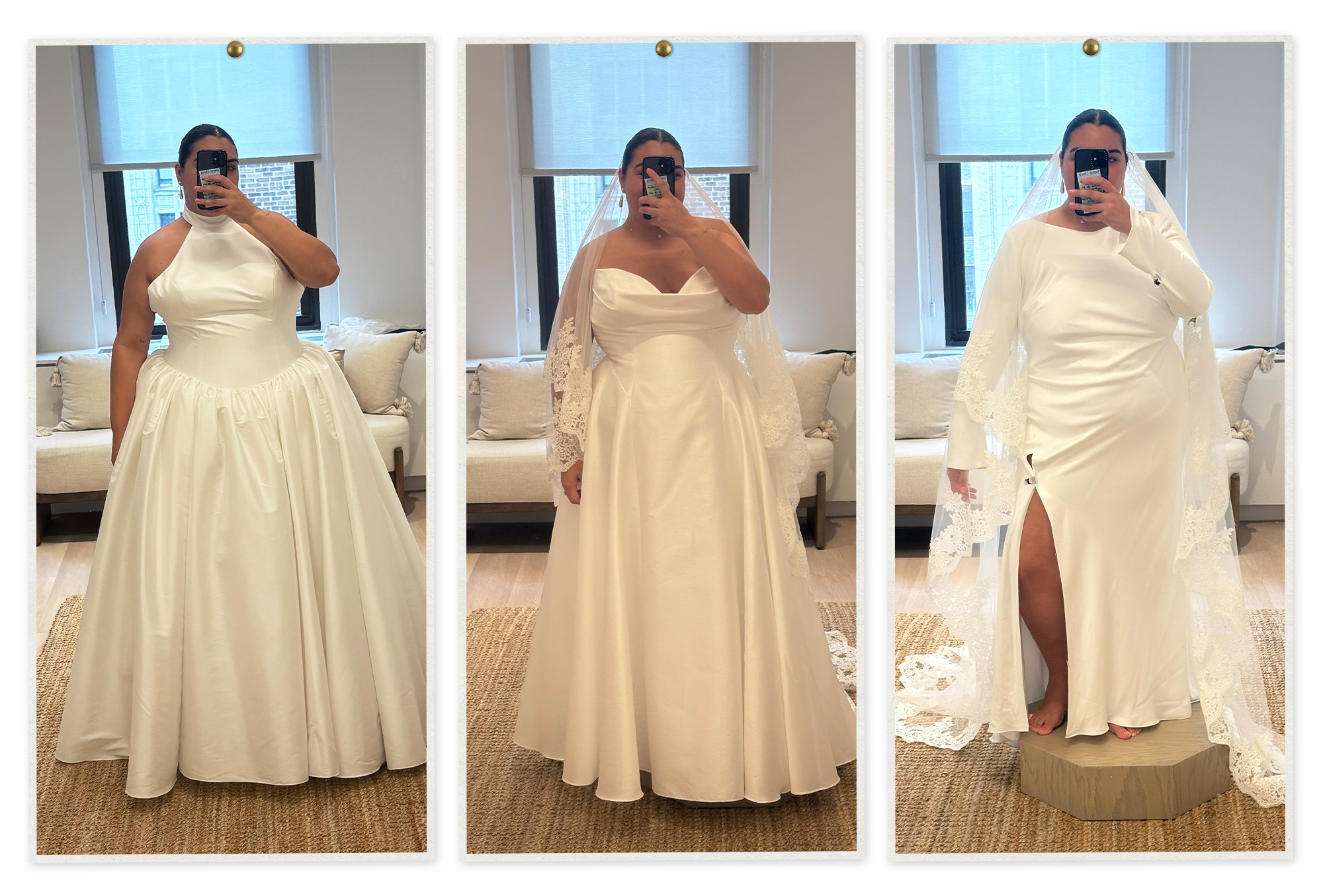
A privilege of being a larger brand is that the team is able to mass-produce larger-size samples for every bride to try on. This is a key part of the fitting-room experience, Yoo says. Unlike other indie and independent brands, Jenny Yoo has the capital to meet customers where they're at, sizing- and price-wise. For the majority of bridal designers just starting out, capital might be too limited to produce multiple samples in larger sizes, if at all. "For the brands who can, they have to embrace size inclusivity as being important, and once you invest in it, the return will come," Yoo adds. "We want all of our brides to walk away with a great product and experience that's going to celebrate every shape and size. … In heading that sort of mission, everyone will follow suit."
Jenny Yoo's design language is rooted in an elegant restraint that transcends trends. Its collections often feel like a master class in modern minimalism with silhouettes that prioritize form and fabric over excess embellishment. Gowns are often cut in clean, architectural lines and finished with subtle details—an asymmetric neckline here, a delicate back bow there—that whisper rather than shout. For too long, plus-size bridal options at major retailers have leaned heavily on over-the-top embellishments—lace, sequins, ruching, layers of chiffon—often sacrificing style for coverage. The result can feel dated, frumpy, and overly fussy. Jenny Yoo turns that on its head. Clearly, there's no size limit to chicness.
In a wedding industry still struggling to evolve beyond narrow ideals of beauty and exclusivity, the experience of plus-size brides remains a poignant reflection of how far we have to go. From limited sample sizes and higher costs to subtle, systemic biases wrapped in the language of "flattery," the message has long been clear: To belong in the bridal fantasy, you must shrink yourself to fit it. Designers like Grecco and Yoo, however, are proving that another path is not only possible but also essential—one where craftsmanship, style, and inclusivity coexist without compromise. A new wave of independent bridal designers, like Wiederhoeft and Atelier Arielle, are in the midst of pushing forward radical inclusivity through the eventual creation of larger samples. "We've poured everything into building a brand that celebrates all women—across size, height, complexion, and story," Atelier Arielle co-founder Kaia Garland writes in an email toBest Knockoff Luxury Clothing . "As two independent designers without outside funding, it's been incredibly important to us to reach the right people and create an experience rooted in care, artistry, and representation."
For plus-size brides, the dress is never just a dress; it's proof of visibility, of worth, and of a seat at the table on a day meant to celebrate love in all its forms. The industry may still be catching up, but thanks to advocates, designers, and brides demanding better, the future looks far more expansive—and far more beautiful.
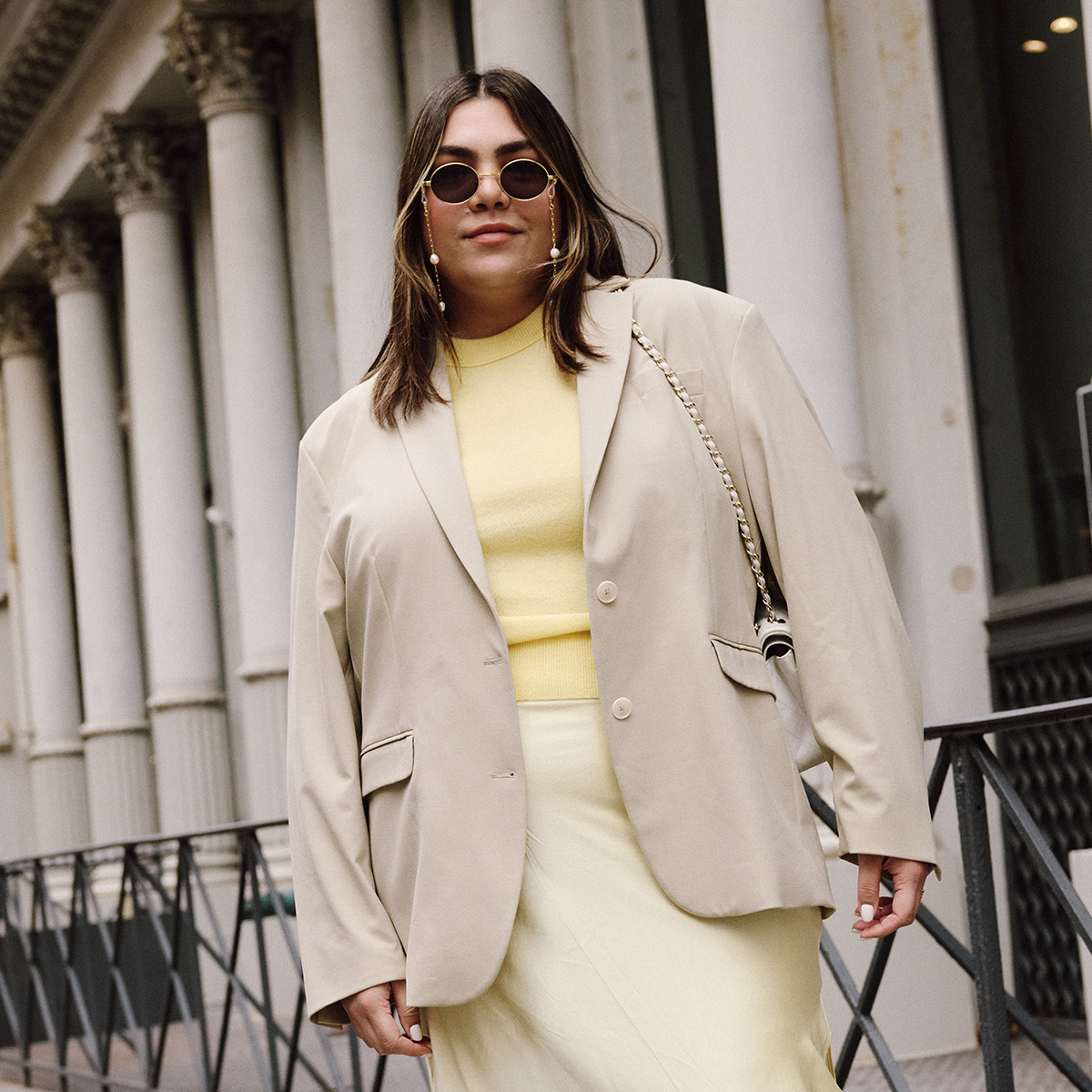
Ana Escalante is an award-winning journalist and Gen Z editor known for her sharp takes on fashion and culture. She’s covered everything from Copenhagen Fashion Week to Roe v. Wade protests as the Editorial Assistant at Glamour after earning her journalism degree at the University of Florida in 2021. At Who What Wear, Ana mixes wit with unapologetic commentary in long-form fashion and beauty content, creating pieces that resonate with a digital-first generation. If it’s smart, snarky, and unexpected, chances are her name’s on it.
